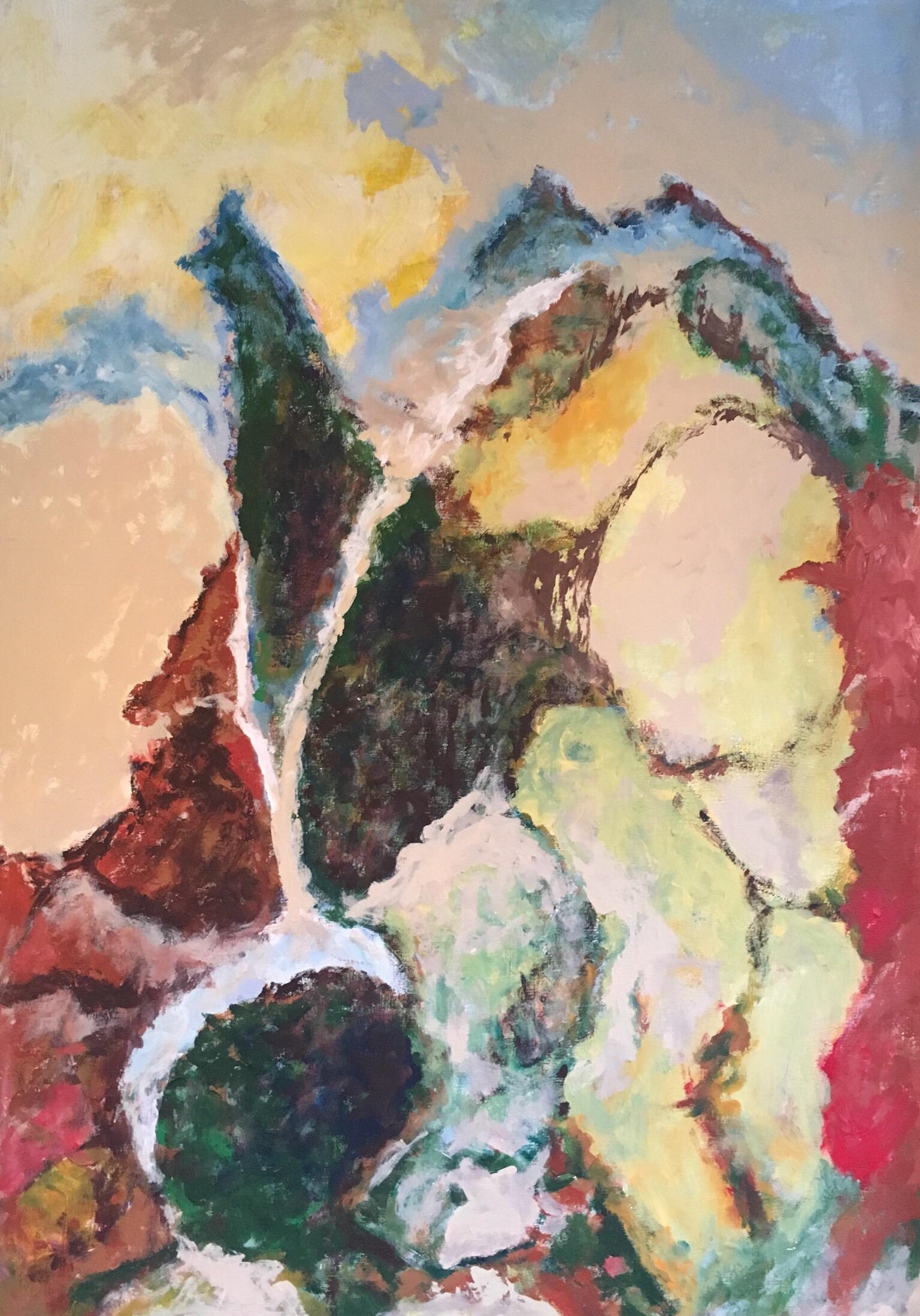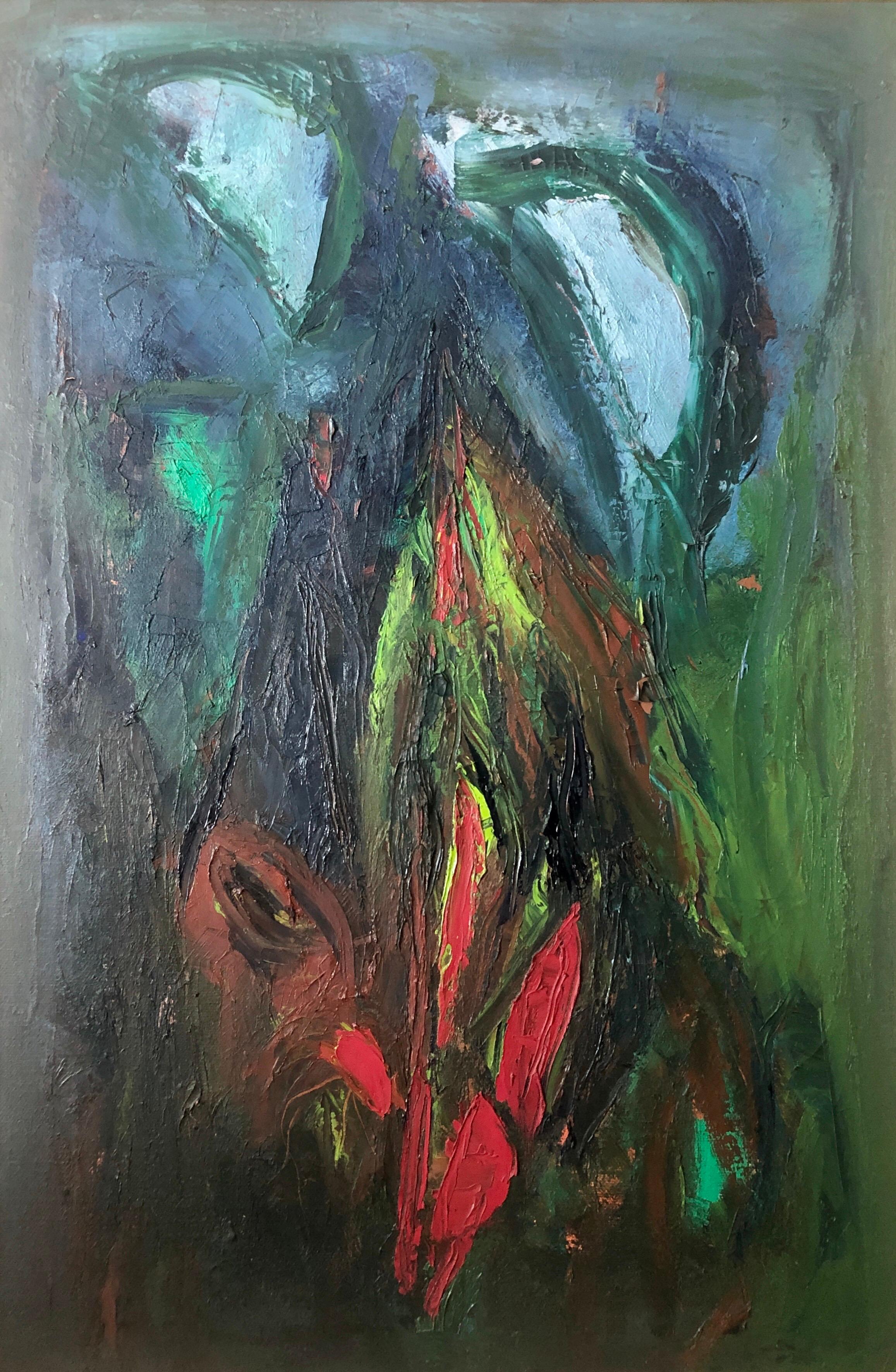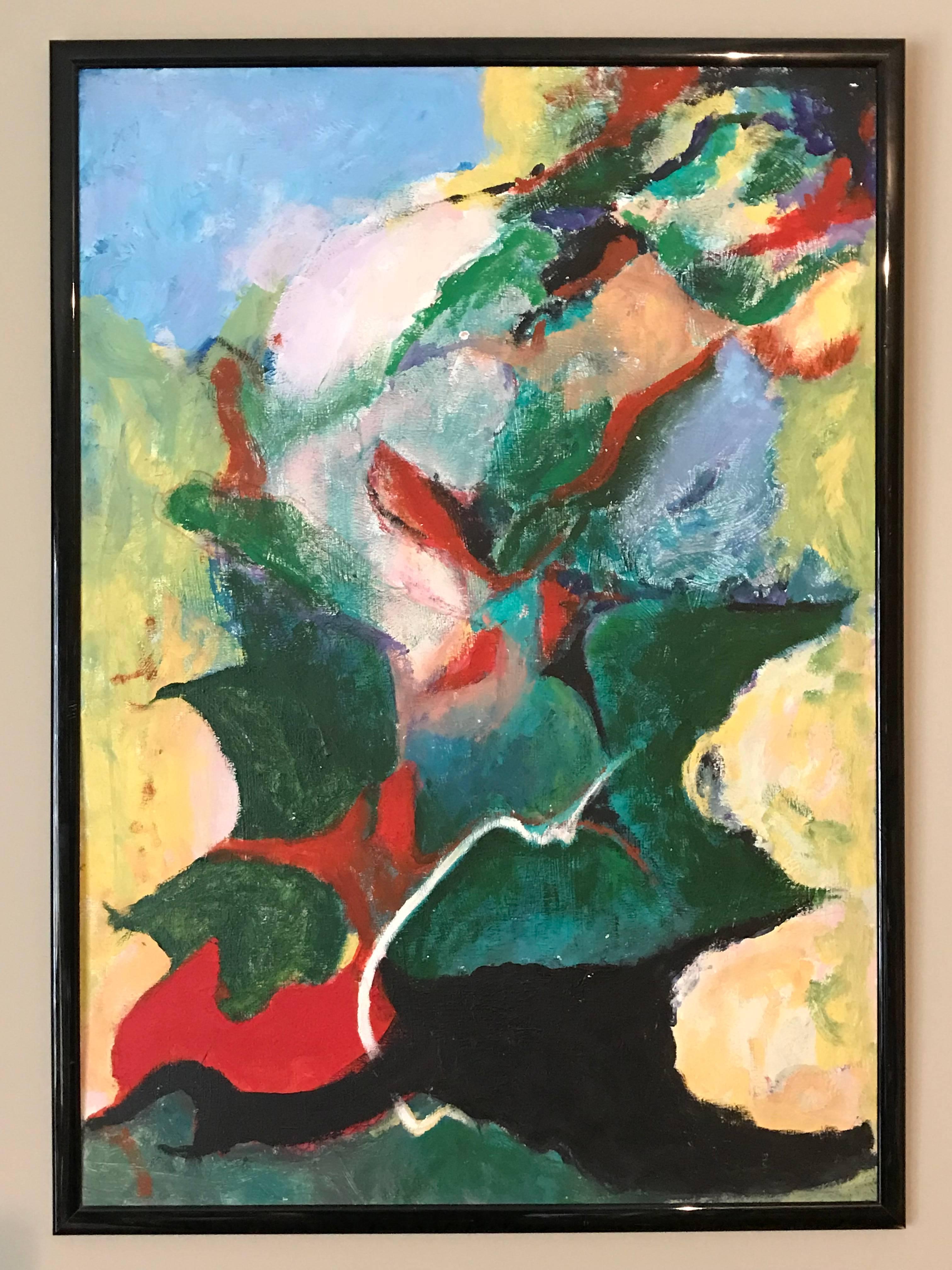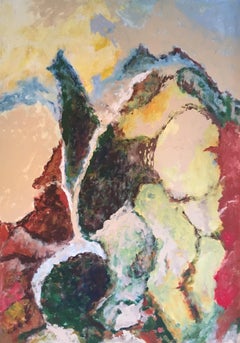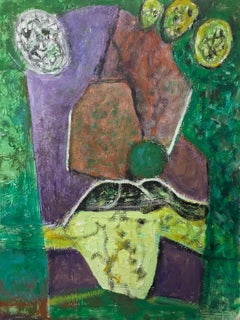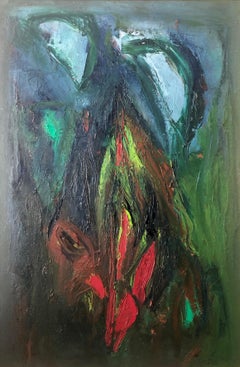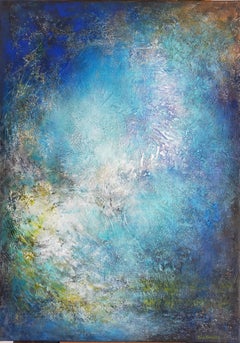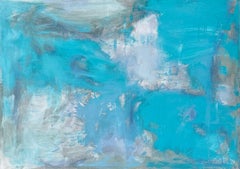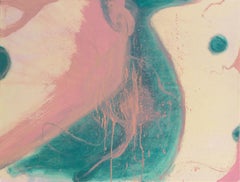Items Similar to Large Turquoise French Expressionist Abstract Oil Painting
Want more images or videos?
Request additional images or videos from the seller
1 of 11
Armand RottenbergLarge Turquoise French Expressionist Abstract Oil Paintingc.1980's
c.1980's
$3,399.56
£2,450
€2,897.22
CA$4,651.24
A$5,195.01
CHF 2,699.49
MX$63,264.79
NOK 34,289.50
SEK 32,310.59
DKK 21,616.79
Shipping
Retrieving quote...The 1stDibs Promise:
Authenticity Guarantee,
Money-Back Guarantee,
24-Hour Cancellation
About the Item
Large Turquoise French Expressionist Abstract Oil Painting
by Armand Rottenberg (French 1903-2000)
signed on the lower right hand corner,
oil painting on board, framed
Framed 37.5 x 27 inches
Stunning original abstract expressionist oil painting by the French abstract artist (and poet), Armand Rottenberg (1903-2000). The painting is signed to the lower corner and came from the artists estate in Marseille, France.
Superb range of palette used - turquoise and soft yellows are the main hues, constructing this wonderful angular Expressionist arrangement of shapes and patterns. Painted on this large scale, it makes a wonderful and imposing statement within an interior.
Rottenberg's work has rarely come to the market, with only 13 oil paintings showing on 'artprice' since 1987! He is an artist whose works we rate highly and highly commend to all our clients.
Condition report:
The painting is in sound and good condition - a few age related scuffs to the frame, which we believe was fitted to the painting by the artist.
- Creator:Armand Rottenberg (1903 - 2000, French)
- Creation Year:c.1980's
- Dimensions:Height: 37.5 in (95.25 cm)Width: 27 in (68.58 cm)Depth: 1 in (2.54 cm)
- Medium:
- Movement & Style:
- Period:
- Condition:
- Gallery Location:Cirencester, GB
- Reference Number:1stDibs: LU50933480901

About the Seller
5.0
Platinum Seller
Premium sellers with a 4.7+ rating and 24-hour response times
Established in 1989
1stDibs seller since 2016
4,602 sales on 1stDibs
Typical response time: 1 hour
- ShippingRetrieving quote...Shipping from: Cirencester, United Kingdom
- Return Policy
Authenticity Guarantee
In the unlikely event there’s an issue with an item’s authenticity, contact us within 1 year for a full refund. DetailsMoney-Back Guarantee
If your item is not as described, is damaged in transit, or does not arrive, contact us within 7 days for a full refund. Details24-Hour Cancellation
You have a 24-hour grace period in which to reconsider your purchase, with no questions asked.Vetted Professional Sellers
Our world-class sellers must adhere to strict standards for service and quality, maintaining the integrity of our listings.Price-Match Guarantee
If you find that a seller listed the same item for a lower price elsewhere, we’ll match it.Trusted Global Delivery
Our best-in-class carrier network provides specialized shipping options worldwide, including custom delivery.More From This Seller
View AllLarge Multi Coloured French Expressionist Abstract Oil Painting
By Armand Rottenberg
Located in Cirencester, Gloucestershire
Large Multi Coloured French Expressionist Abstract Oil Painting
by Armand Rottenberg (French 1903-2000)
oil painting on board, framed
Framed 37.5 x 27 inches
Stunning original abs...
Category
Late 20th Century Abstract Expressionist Abstract Paintings
Materials
Oil
Large Original Oil Painting Abstraction Green Teal Turquoise colors
By Jean-Marie Deroche
Located in Cirencester, Gloucestershire
Stunning and very large French Post-Impressionist oil painting depicting this deeply colourful abstract oil painting featuring an incredible blend and range of colors - aquamarines, ...
Category
Late 20th Century Abstract Expressionist Abstract Paintings
Materials
Oil
French Expressionist Abstract Original Oil Painting
By Armand Rottenberg
Located in Cirencester, Gloucestershire
Expressionist Abstract
by Armand Rottenberg (French 1903-2000)
Signed oil painting on board, unframed
Board size: 29 x 21 inches
provenane: the artists estate, France
Stunning origi...
Category
Mid-20th Century Abstract Expressionist Abstract Paintings
Materials
Oil
Large French Expressionist Abstract Oil Painting
By Armand Rottenberg
Located in Cirencester, Gloucestershire
Expressionist Composition
by Armand Rottenberg (French 1903-2000)
signed lower corner, dated 1990
oil painting on board, framed
Framed 28.5 x 17.5 inches
Stunning original abstract...
Category
Late 20th Century Abstract Expressionist Abstract Paintings
Materials
Oil
Large French Expressionist Abstract Oil Painting
By Armand Rottenberg
Located in Cirencester, Gloucestershire
Expressionist Composition
by Armand Rottenberg (French 1903-2000)
oil painting on board, framed
Provenance: the artists estate
Framed 37 x 28 inches
Stunning original Cubist painti...
Category
Late 20th Century Abstract Expressionist Abstract Paintings
Materials
Oil
ARMAND ROTTENBERG (1903-2000) LARGE SIGNED FRENCH EXPRESSIONIST ABSTRACT OIL
By Armand Rottenberg
Located in Cirencester, Gloucestershire
"Abstract Composition"
by Armand Rottenberg (French 1903-2000)
signed lower right, oil painting on board, unframed
board: 23.5 x 19.5 inches
Stunning original abstract painting by ...
Category
Mid-20th Century Abstract Expressionist Abstract Paintings
Materials
Oil
You May Also Like
Large Colorful MCM Abstract Expressionist Oil Painting Modernist Ralph Rosenborg
By Ralph Rosenborg
Located in Surfside, FL
Ralph Rosenborg (American, 1913-1992) Mountain Weed with Two Clouds, oil on jute canvas, canvas is hand signed recto and verso, artists label and Snyder Fine Art gallery label, The p...
Category
1960s Abstract Expressionist Abstract Paintings
Materials
Canvas, Jute, Oil
"Turquoise" abstract acrylic paint on linen panel 95x62cm 2022
By Emmanuelle Vroelant
Located in Saint Pol de Léon, Bretagne
"Turquoise" abstract acrylic paint on linen panel 95x62cm 2022
The color that makes me feel good, that seems welcoming to me is turquoise.
Watching the transparency of the water whe...
Category
2010s Abstract Abstract Paintings
Materials
Marble
$4,595 Sale Price
20% Off
Free Shipping
Oil on Canvas Painting Titled “AbEx Teal Series 43” 37 x 52
By Mirtha Moreno
Located in West Palm Beach, FL
Born in Havana, Cuba, in the late 70s during a well-documented time of religious and political oppression, abstract expressionist artist Mirtha Moreno, immigrated to the United State...
Category
2010s Abstract Expressionist Abstract Paintings
Materials
Oil, Acrylic
'Abstract in Turquoise and Rose', Large American School Oil Abstraction
Located in Santa Cruz, CA
Signed lower right, 'C. Maxwell' (American. 20th Century) and painted circa 1975.
A very substantial, American School oil abstract comprising cont...
Category
1970s Abstract Abstract Paintings
Materials
Canvas, Oil
Large Colorful 1980s New York Abstract Expressionist Oil Painting Joan Thorne
By Joan Thorne
Located in Surfside, FL
This is a large colorful, bold, vibrant original oil painting on canvas, hand signed and dated 1989.
It is titled Crete.
Joan Thorne (1943-) is a New York artist nationally and internationally recognized. A third generation Abstract Expressionist woman artist who has exhibited works over the past 30 years. Her art has been shown in the Corcoran Gallery of Art, Washington, DC, the Whitney Museum’s Annual Exhibition, the Grand Palais in Paris, and Barbara Rose’s seminal exhibition American Painting: The Eighties at New York University’s Grey Gallery.
Her recent shows in New York City have been reviewed by the New York Times, Art in America, ArtNews and The New Criterion among others. Her work has been compared to Elizabeth Murray work. It is colorful and has a 1980's, Memphis Milano feel to it.
Thorne grew up in Greenwich Village. Her mother was a Ukrainian immigrant from a musical family, who became an English teacher; her father, a surgeon. Recognizing their daughter’s artistic talents early, they enrolled her at age six in the Little Red Schoolhouse on Bleecker Street in Greenwich Village. Founded in 1921 by Elisabeth Irwin, a pioneer in educational reform, the school has continued to maintain its reputation as a progressive and nurturing catalyst for creative children. Pete Seeger, the folk singer, performed there so frequently that Thorne remembered him as if he were one of the teachers. In 1971, Thorne met Faith Ringgold (b. 1930) and joined her as a teacher at the Women’s House of Detention on Rikers Island in a new program called “Art without Walls–Free Space.” The program, which had been born from the civil rights movement, was aimed at enriching the lives of the inmates. Thorne and her peers came of age struggling against sexism in the art establishment and its attendant lack of exhibition opportunities for women. Since 1985, this issue had been loudly exposed by the public protests of the Guerrilla Girls, whose members remain a well-kept secret.
Her painting has been included in two Whitney Museum Biennials and various other museum group exhibitions both in the United States, Europe and Latin America.
She has had numerous one person shows in galleries such as: Sideshow Gallery New York, Fischbach Gallery, New York City, Corcoran Gallery of Art, Washington D.C., Willard Gallery, New York, Graham & Sons Gallery, New York, The Clocktower, New York City, and the National Arts Club among others.
Thorne has been awarded the Prix de Rome Fellowship to paint at the American Academy in Rome. She also received two National Endowment grants for painting and two Pollock Krasner Grants among others.
"Since 1973, while myriad styles, movements and mediums have flourished briefly in turn, Joan Thorne has steadfastly developed one visual language-that of painterly surface, light, color and distilled form-which she finds best suited for her artistic project: intimating dreams. intuitions and the psychic consequences of travel. "
"For there is something luxuriant and mysterious in Thorne's compositions. They have a classic modernist genealogy that encompasses Arthur Dove, Georgia O'Keeffe, Marsden Hartley, Milton Avery and Mark Tobey; yet each carries a hint of exoticism, "
--Richard Vine, Art In America, Review, June 1998
Education
Hunter College, New York, M.A.
New York University, New York, B.S.
Awards
2006 Adolf Gottlieb Foundation Grant in Painting
2003 Prize in Painting, Florence BiennaleInternazionale, Florence, Italy
2001 Pollock Krasner Foundation Grant in Painting
1986 Prix de Rome, American Academy in Rome
Pollock Krasner Foundation Grant in Painting
1983 National Endowment for the Arts, Fellowship in Painting
1980 New York State Council on the Arts, Grant for Painting
1979 National Endowment for the Arts, Fellowship in Painting
1976 Grant in Painting, Rhode Island State Council on the Arts
1975 New York State Council on the Arts, Grant for Painting
1974 Grant in Painting, Rhode Island State Council on the Arts
1972 Artist of the Year, Aldrich Foundation
Select Solo Exhibitions
2015 Black and White Into Color, National Arts Club, New York
2013 Sideshow Gallery, Williamsburg, NY
2005 Chris Winfield Gallery, Carmel, CA
2004 Klaus Steinmetz Arte Contemporaneo, San Rafael de Escazu, Costa Rica
2002 Feria de Arte International Arcale, Salamanca, España
2001 Andre Zarre Gallery, New York
2000 Retrospective: Museo Las Americas, San Juan, Puerto Rico
1998 A Retrospective: Museo Voluntariado De Las Casas Reales, Casa de Bastidas,
Santo Domingo, Dominican Republic
1990 1985 Graham Modern , New York City, NY
1989 1986 Ruth Bachofen Gallery, Santa Monica, CA
1986 William Halsey Gallery, Simon Center for the Arts, College of Charleston, Charleston, SC
1983 Lincoln Center Gallery, Lincoln Center, New York City, NY
Dart Gallery, Chicago, IL
Gloria Luria Gallery, Bay Harbor Island, FL
1982 Nina Freudenheim Gallery, Buffalo, N
1980 Willard Gallery, New York
1979 The Clocktower: Institute for Art and Urban Resources, New York City, NY
1977 Galerie Veith Turske, Cologne Art Fair, Cologne, Germany
1974 Fischbach Gallery, New York City, NY
1973 Corcoran Gallery of Art, Washington, DC
Select Group Exhibitions
2019 Art On Paper, March 2019, New York, NY
2018 Sideshow Gallery, The Greatest Show On Earth, Williamsburg, NY
2015 Outside The Lines/Modernist Drawings, National Arts Club, NY
2014 "National Arbor Day Show", National Arts Club, New York, NY
ArtHamptons Fair, July 10-13, East Hampton, NY
Tribal and Contemporary Art, June 12 - July 28, New York, NY
2012 Art Southampton, International and Contemporary Modern Art Fair, Hollis Taggart
2010 Janet Kurnatowsky Gallery, New York
2003 Biennale Internazionale Dell' Arte Contemporanea, Florence, Italy
2002 Gallery Uno 'Spazio Su Misura, Milan, Italy
1991 Andre Emmerich Gallery, "Abstract Painting of the 90's", curated by Barbara Rose.
New York Stock Exchange, Invitational
1989 Graham Modern, "Synthesis"
1986 Graham Modern, "Diptychs, Triptychs, Polyptychs"
Sidney Janis Gallery, "American Women Artists", New York City, NY
Nina Freudenheim Gallery, Buffalo, NY
N.Y.C.W.C.A., "Abstract Painting: Painting by Women Artists...
Category
1980s Post-Modern Abstract Paintings
Materials
Canvas, Acrylic Polymer, Oil
Abysses by Frédérique Domergue - Contemporary abstract painting, turquoise, sea
By Frédérique Domergue
Located in Paris, FR
Abysses is a unique painting by French contemporary artist Frédérique Domergue. This painting is made with oxidized zinc and bronze leaves on aluminum, patina fixed with beeswax, dim...
Category
2010s Abstract Abstract Paintings
Materials
Bronze
